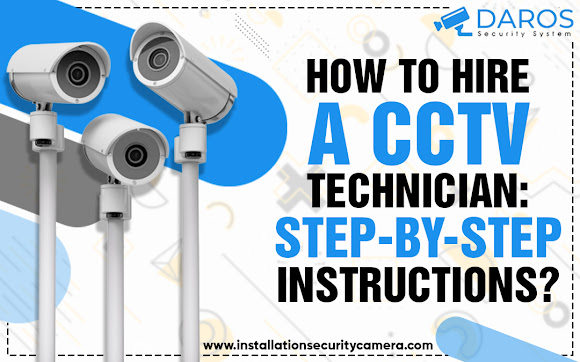CCTV Camera Installation: Enhancing Security with Every Lens
As
individuals worry more about their safety, CCTV cameras are becoming part of
home and commercial security systems. You cannot overstate how much peace of
mind a continual tracking system provides. CCTV camera installation is an easy
way to keep an eye on your property, discourage crime, or keep an eye on staff.
It is important to arrange the installation process ahead of time since there
are so many systems and proper setup of them is challenging. This article
covers the most crucial stages for installing CCTV cameras to protect your
home.
Why are CCTV services important?
No
longer merely for monitoring, CCTV cameras are increasingly essential to home
and business security. First, they deter crime well. Burglars, thieves, and
robbers are less inclined to target checked properties. The plain look of a
CCTV camera can deter theft, vandalism, and other crimes. Businesses may save
insurance costs and gain consumer trust by ensuring their area is secure.
Guide to Installing CCTV Camera
CCTV camera installation Miami is easy, but you need to take some extra
measures to maximize their use. The full setup instructions for CCTV cameras
are provided here:
1. Assess your security needs
Selecting
a system depends on knowing exactly what you want to defend. Are your front
door, backyard, home offices or warehouses more of a concern? Consider the area’s
most prone to theft or damage and the necessary safeguards. Look here to
determine how many cameras you need, where to position them, and whether to wire
or wirelessly install them
2. Choose the Right System
Once you know your protection needs, choose a
technique. Security cameras range from small home cams to large enterprise
systems. Systems with HD cameras and night vision or motion detection are
available. Both wired and wireless systems have benefits and downsides.
Wireless systems are versatile and quick to set up, while cable systems are
more stable.
3. Plan the CCTV Placement
Positioning your cameras properly ensures they cover all crucial angles. First, determine entrances like doors, windows, and pathways. Front entrance, rear door, shed, and hallway are frequent places to put them. Cover blind areas or unseeable terrain on your property. Remember to place the cameras at a height that enables them view properly without being too low or simple to manipulate. For instance, trees and shrubs should not block.
4. Mount the Cameras Securely
Mount
cameras securely to prevent damage or tampering. Use the correct screws,
clamps, and mounts while working on walls. Weatherproof the cameras if you set
them outside. Keep them securely in place to prevent movement or knocking.
5. Connect to the Recorder
Once the cameras are secure, attach them to a
recorder or NVR. It stores all CCTV footage. A wired system should have all
wires correctly connected and protected to prevent damage or tampering. Test
your wireless cameras by connecting them to Wi-Fi and making sure the Recorder
can receive footage.
6. Set Up Remote Monitoring
Finally,
use internet monitoring to maximize your security
camera installation. You may now view your house from anywhere using a
computer or app. Remote access lets you monitor your property while away, such
as on vacation or at work. Most current CCTV smartphone applications let you
obtain alerts, see live footage, and play back recorded movies.
Conclusion
CCTV
cameras are among the greatest ways you can protect your business or property.
This adds security and comfort of mind. If you carefully consider your security
needs, choose the proper system, and plan your security camera installation, your CCTV cameras will function well and
promptly. The procedure may appear complicated, but choosing Security Camera
Installation Company can get you the best house insurance.



Comments
Post a Comment